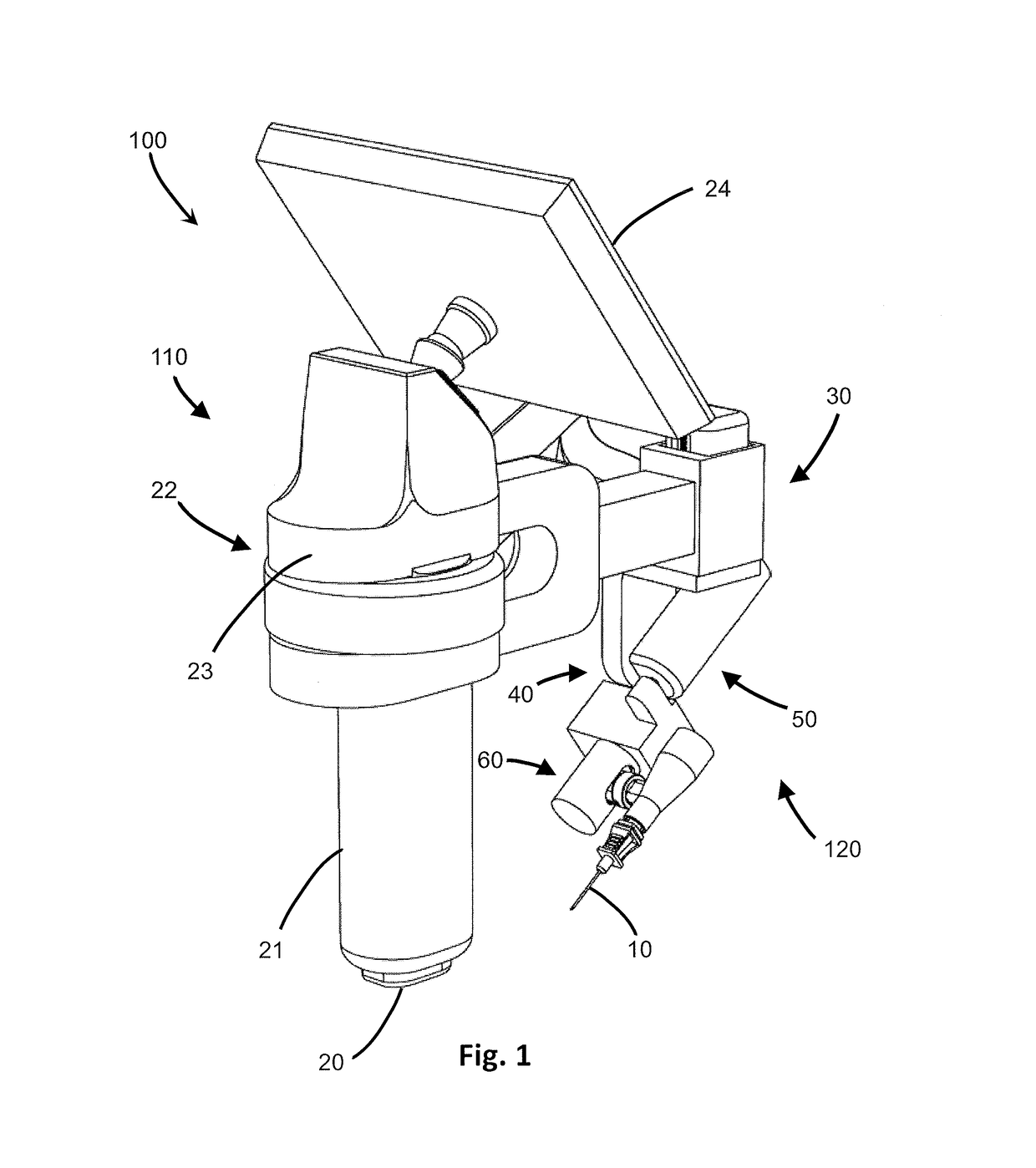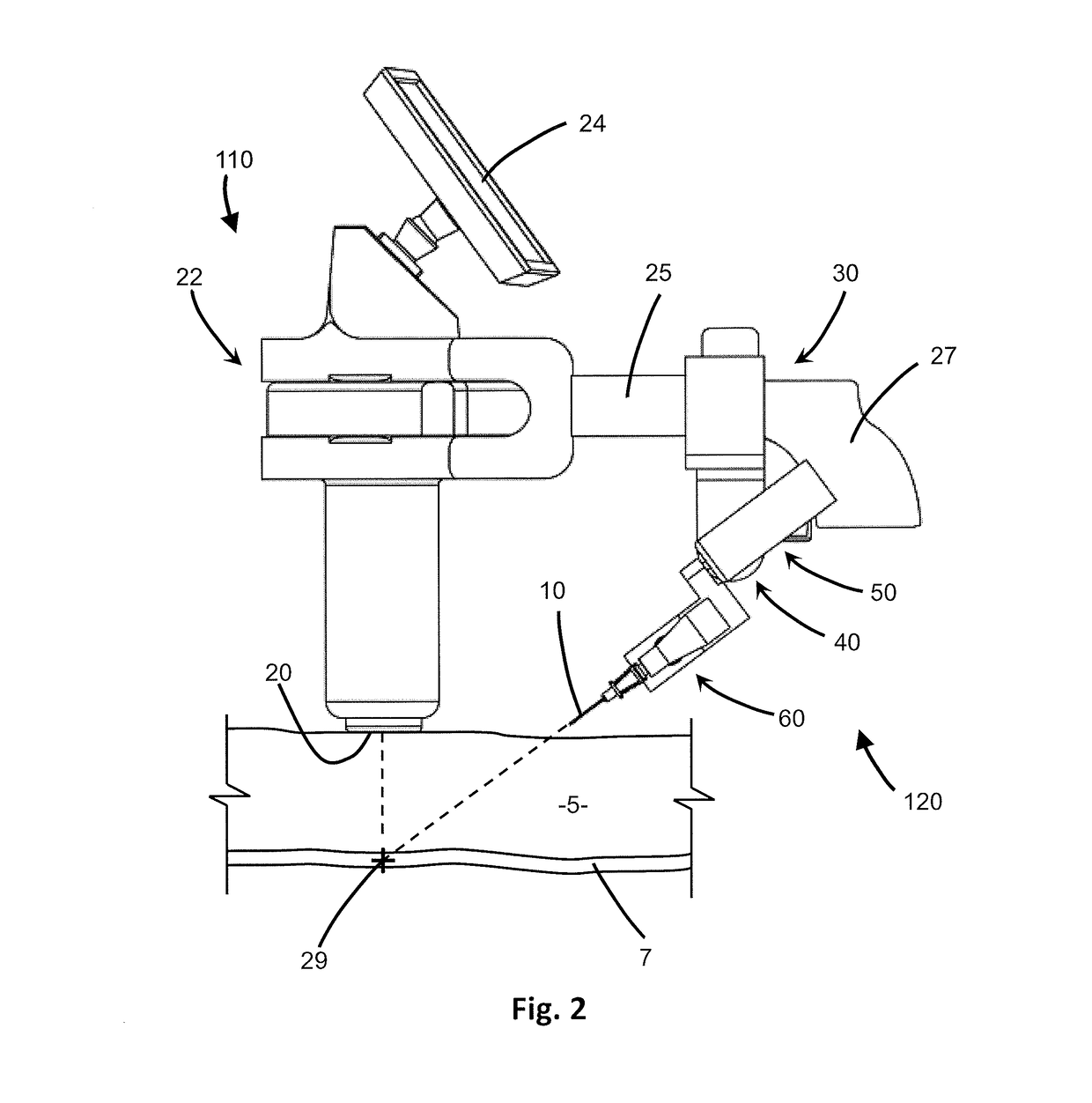Device and System for Insertion of Penetrating Member
a technology of penetrating member and needle, which is applied in the field of devices for penetrating tissues, can solve the problems penetration force, energy absorption, and tissue damage, and achieves the effects of reducing tissue deformation, energy absorption, penetration force, and tissue damag
- Summary
- Abstract
- Description
- Claims
- Application Information
AI Technical Summary
Benefits of technology
Problems solved by technology
Method used
Image
Examples
Embodiment Construction
[0047]As shown in the accompanying drawings, the present invention is directed to an insertion device, system and method that permits subcutaneous access to body cavities, such as blood vessels, for needle insertion and potential placement of guidewires, dilators, catheters such as CVCs, and the like. The device and system includes a plurality of actuators that may be automated for adjusting the position and deploying a penetrating member into the tissue of a subject, such as the skin of a patient. A target point is preselected and used to calculate the position and adjustments to the penetrating member, and the series of actuators are adjusted to control the various components of the device to produce the proper alignment so as to reach the preselected target position upon deployment. The actuators may be adjusted automatically based on calculations made by a processor, and may further be adjusted as the target point location is changed. In at least one embodiment, an image-based m...
PUM
 Login to View More
Login to View More Abstract
Description
Claims
Application Information
 Login to View More
Login to View More - R&D
- Intellectual Property
- Life Sciences
- Materials
- Tech Scout
- Unparalleled Data Quality
- Higher Quality Content
- 60% Fewer Hallucinations
Browse by: Latest US Patents, China's latest patents, Technical Efficacy Thesaurus, Application Domain, Technology Topic, Popular Technical Reports.
© 2025 PatSnap. All rights reserved.Legal|Privacy policy|Modern Slavery Act Transparency Statement|Sitemap|About US| Contact US: help@patsnap.com



